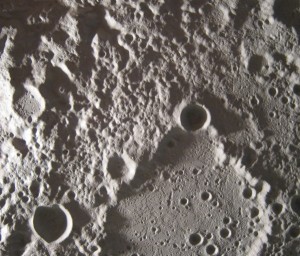Replicators Have Arrived
Three-dimensional printing technology can be used in conjunction with the material and energy resources of the Moon to build new space faring capabilities.
Of all the wonders depicted in science fiction books and movies, one of the most intriguing is the machine that makes anything that you need or desire. Merely enter a detailed plan, or push the button for items programmed into the machine – dials twirl, the machine hums and out pops what you requested. Technology gives us Aladdin’s Lamp. A handy device that will find many uses.
We’re not quite there yet but crude versions of such imagined machines already exist. These machines are called “rapid prototype” generators or three-dimensional printers. They take digitized information about the dimensions and shape of an object and use that data to control a fabricator that re-creates the object using a variety of different materials. Typically, these machines use easy to mold plastics and epoxy resins but in principle, any material could be used to create virtually any object.
What’s the relevance of this technology to spaceflight and to the Moon? One of the key objects of lunar return is to learn how to use the material and energy resources of the Moon to create new capabilities. To date, we have focused our attention on simple raw materials like bulk regolith (soil) and the water found at the poles. It makes sense to initially limit our resource utilization ambitions to simple materials that are both useful and relatively massive, which currently have those killer transportation costs when delivered from Earth. Bulk regolith has many different uses, such as shielding (e.g., rocket exhaust blast berms) as well as raw material for simple surface structures.
However, once we are on the Moon and have met the basic necessities of life, we can begin to experiment with making and using more complex products. In effect, the inhabitants of the Moon will begin to create more complicated parts and items from what they find around them, just outside their door. The techniques of three-dimensional printing will allow us to discover what makes life off-planet easier and more productive. We will experiment by using the local materials to maintain and repair equipment, build new structures, and finally begin off-planet manufacturing.
During the early stages of lunar habitation, material and equipment will be brought from Earth. With continued use, particularly in the harsh lunar surface environment, breakdowns will occur. Although initially we will use spare parts from Earth, for simple uncomplicated structures that are needed quickly, a three-dimensional printer can make substitute parts using local resource materials found near the outpost. Most existing 3-D printers on Earth use plastics and related materials (which are complex carbon-based compounds, mostly derived from petroleum) but some processing has used concrete, which can be made on the Moon from sieved regolith and water. In addition, we also know that regolith can be fused into ceramic using microwaves, so rapid prototyping activities on the Moon may eventually find that partially melting particulate matter into glass is another way to create useful objects.
The lunar surface is a good source of material and energy useful in creating a wide variety of objects. I mentioned simple ceramics and aggregates, but additionally, a variety of metals (including iron, aluminum and titanium) are available on the Moon. Silicon for making electronic components and solar cells is abundant on the Moon. Designs for robotic rovers that literally fuse the in-place upper surface of the lunar regolith into electricity-producing solar cells have already been imagined and prototyped. We can outsource solar energy jobs to the Moon!
These technical developments lead to mind-boggling possibilities. Back in the 1940s, the mathematician John von Neumann imagined what he called “self-replicating automata,” small machines that could process information to reproduce themselves at exponential rates. Interestingly, von Neumann himself thought of the idea of using such automata in space, where both energy and materials are (quite literally) unlimited. A machine that contains the information and the ability to reproduce itself may ultimately be the tool humanity needs to “conquer” space. Hordes of reproducing robots could prepare a planet for colonization as well as providing safe havens and habitats.
We can experiment on the Moon with self-replicating machines because it contains the necessary material and energy resources. Of course, in the near-term, we will simply use this new technology to create spare parts and perhaps simple objects that we find serve our immediate and utilitarian needs. But things like this have a habit of evolving far beyond their initial envisioned use, and often in directions that we do not expect; we are not smart enough to imagine what we don’t know. The technology of three-dimensional printing will make the habitation of the Moon – our nearest neighbor in space – easier and more productive. Even now, creative former NASA workers have found a way to make this technology pay off. In the future, perhaps their talents could be applied to making the Moon a second home to humanity.
Note: The image at the beginning of this post is a model of the lunar north pole, made using a three-dimensional printer and LRO laser altimetry data by Howard Fink of New York University. The scale of the model is about 30 cm across.
/https://tf-cmsv2-smithsonianmag-media.s3.amazonaws.com/accounts/headshot/blog_headshot_spudis-300x300.jpg)

/https://tf-cmsv2-smithsonianmag-media.s3.amazonaws.com/accounts/headshot/blog_headshot_spudis-300x300.jpg)